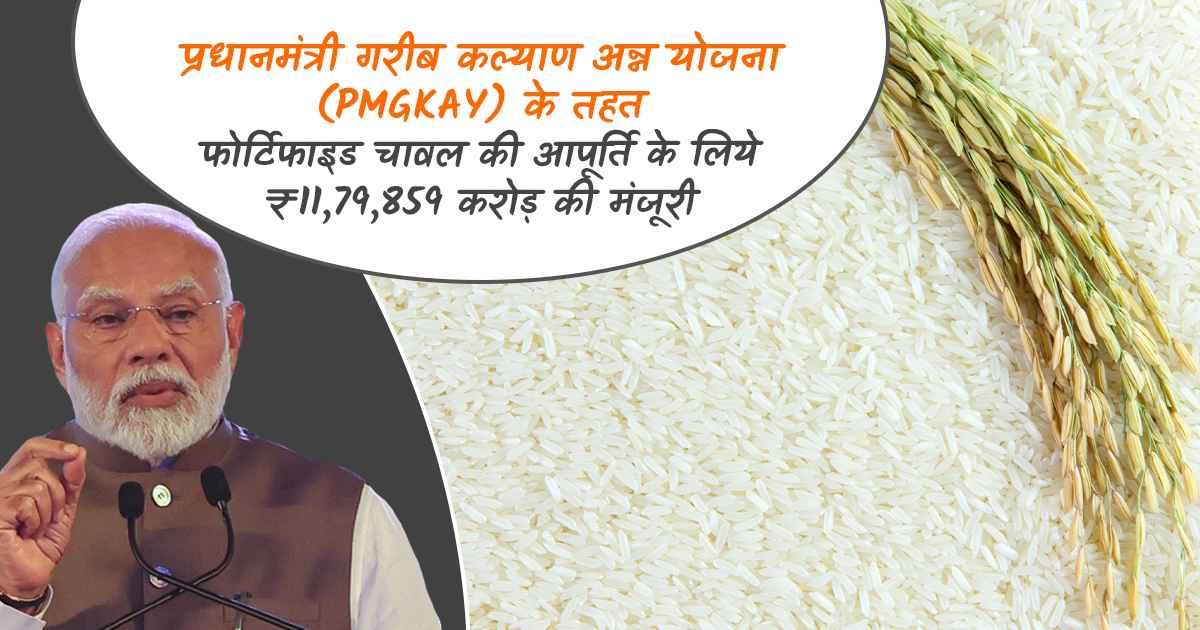
On the occasion of India's 75th Independence Day, Prime Minister Narendra Modi emphasized the need to combat malnutrition, stating that it is essential to ensure the availability of nutritious food for every citizen, especially for the marginalized sections of society, to build a healthy and empowered India. Recently, the Cabinet approved the distribution of fortified rice under all government schemes, marking a significant step towards realizing the Prime Minister's vision of a malnutrition-free India.
The Cabinet has made a crucial decision to extend the universal supply of fortified rice under all welfare schemes, including the Pradhan Mantri Garib Kalyan Anna Yojana (PMGKAY), from July 2024 to December 2028.
The objective of this initiative is to enhance the nutritional levels of vulnerable groups by providing fortified rice rich in essential nutrients such as iron, folic acid, and vitamin B12. According to an analysis by the World Health Organization, rice fortification could reduce the risk of iron deficiency by up to 35%. The estimated annual expenditure for this initiative is ₹2,565 crores, which has the potential to prevent approximately 16.6 million Disability-Adjusted Life Years (DALYs) annually and could save around ₹49,800 crores in health care services.
Since the launch of the pilot scheme for rice fortification in 15 states in 2020, this program has made significant progress. From 2019-20 to March 31, 2024, approximately 406 lakh metric tons of fortified rice have been distributed through the Public Distribution System (PDS), improving nutrition for millions across the country.
Fortification is a process in which essential vitamins and minerals, such as micronutrients, are added to food items, enhancing their nutritional capacity. Globally, fortification has been adopted as a safe and effective measure to combat malnutrition and anemia. In India, fortification has already proven successful, as seen in the control of iodine deficiency and related diseases through iodized salt.
The government has taken several important steps, including the distribution of fortified rice. Rice serves as the staple food for approximately 65% of India's population, making it a suitable medium for supplying essential nutrients. Under this process, fortified rice kernels are blended with regular rice, adhering to the standards set by the Food Safety and Standards Authority of India (FSSAI). Through rice fortification, the government's aim is to rapidly increase the supply of nutrition, especially for those suffering from malnutrition.